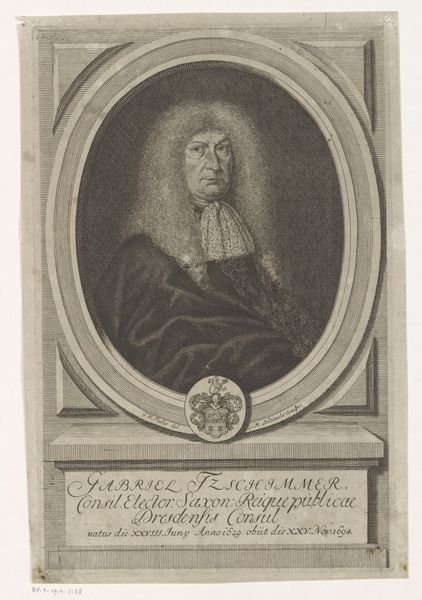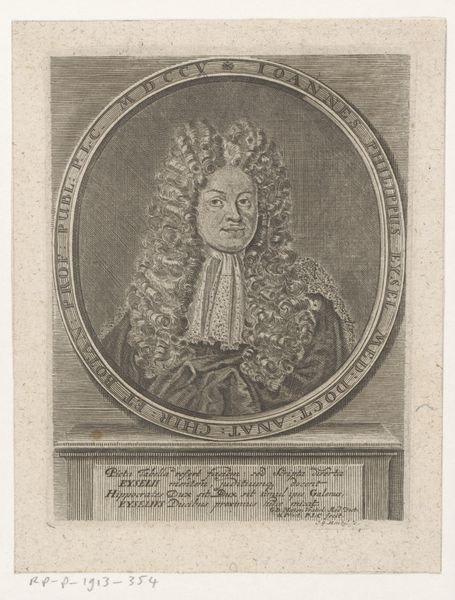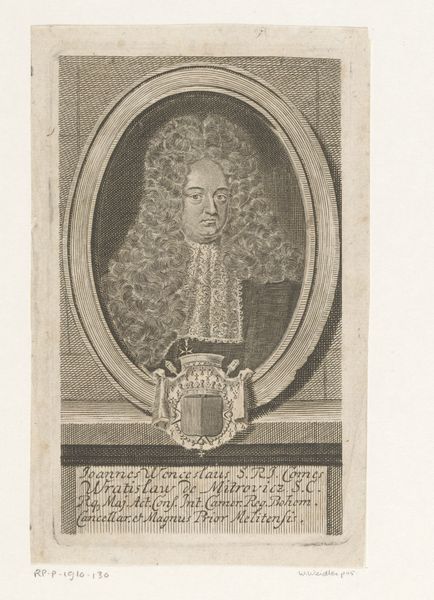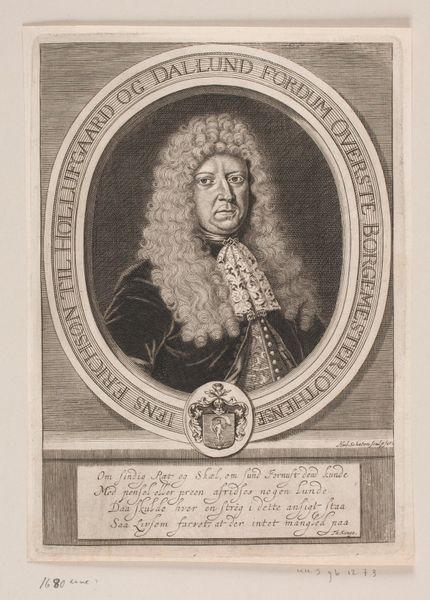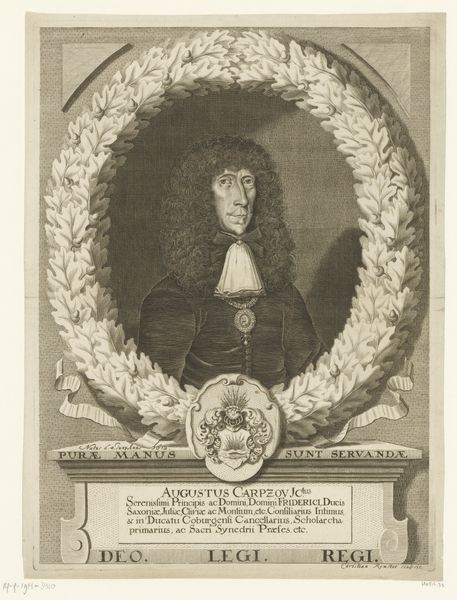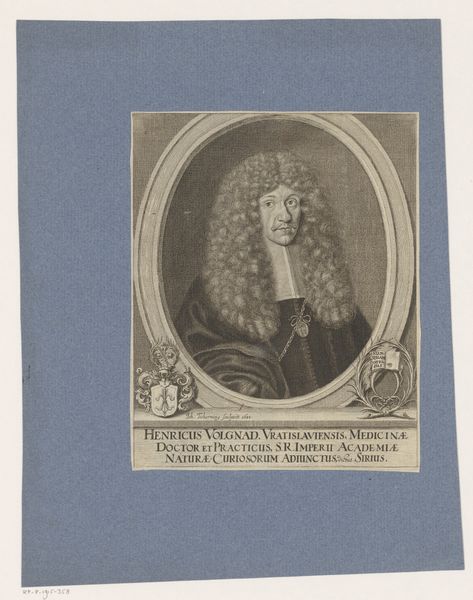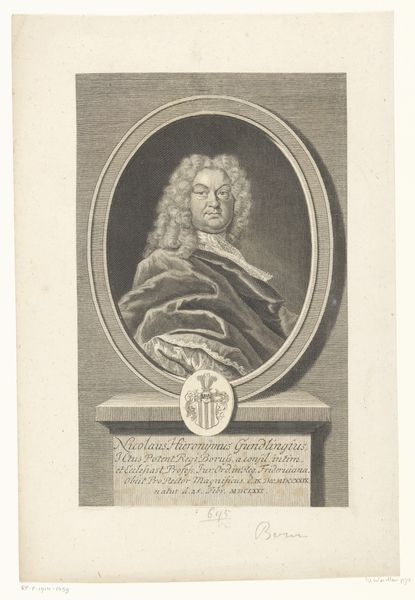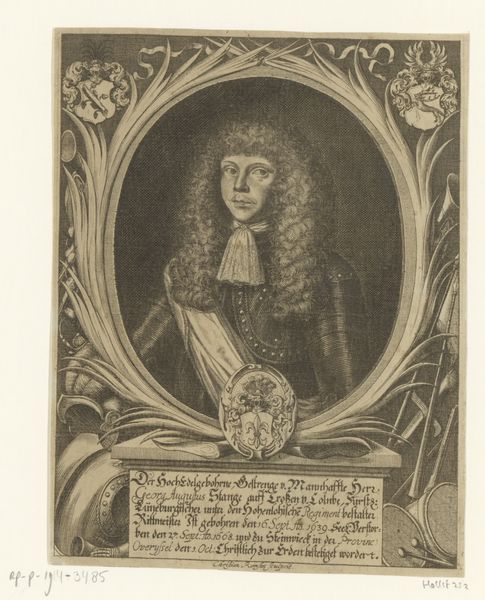
print, intaglio, engraving
#
portrait
#
baroque
# print
#
intaglio
#
old engraving style
#
history-painting
#
engraving
Dimensions: height 190 mm, width 149 mm
Copyright: Rijks Museum: Open Domain
Curator: Here we have a portrait of Ludwig Günther Martini, dating sometime between 1665 and 1721. It's an engraving, a detailed print created by an artist named Christian Romstet. Editor: The immediate impression is of solemnity and formality, wouldn't you say? The subject's monumental wig dominates the composition; its texture, almost cloud-like, contrasts beautifully with the sharp lines of the engraved lettering and crest. Curator: Precisely! Note how the artist employs the intaglio technique to render this effect. The density of the etched lines builds up tone, especially evident in the rendering of shadows beneath the face and within the swirling curls of the elaborate wig. This emphasis on chiaroscuro contributes to the print’s somber atmosphere. Editor: It does. And there is an intricate dance between status and symbolic representation, doesn't it? This wasn't simply a likeness, but a statement of identity—the wig alone signifies considerable social standing in that period. The text inscribed on the print adds another layer, almost like a symbolic caption beneath an icon. Curator: Agreed. The cartouche displays Martini’s coat of arms, but it's the text above that draws the eye, framing the sitter's name within an oval to lend an air of classical refinement. It shows a carefully considered use of available space, adding complexity, a characteristic hallmark of Baroque design. Editor: To your point, this era thrived on emblems and allegories. Beyond status, what meanings were encoded here? Could this imposing visual language offer clues to Martini’s profession, beliefs, and role within his community? The print acts as an echo through time, reminding us of Baroque society's visual rhetoric. Curator: Yes, its rigorous structure showcases a distinct formalism characteristic of portraiture of the Baroque era. Editor: In essence, beyond the fine lines of the print, we witness echoes of Martini's world and our own evolving interpretations, making this more than just a portrait. Curator: Indeed, a dialogue across centuries on representation and persona.
Comments
No comments
Be the first to comment and join the conversation on the ultimate creative platform.




